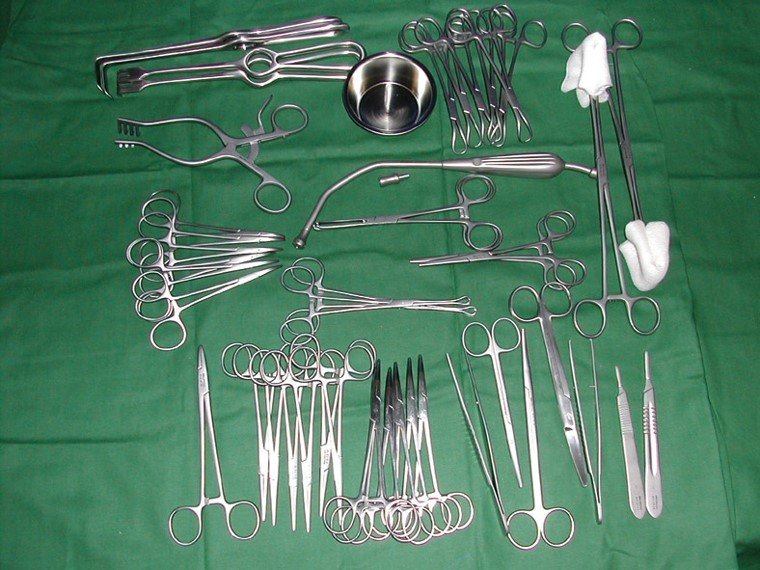The world of healthcare is one that is in constant evolution, with the sophistication of technology directly impacting the efficiency and efficacy of medical procedures. Central to the success of any surgical operation are the tools that enable healthcare professionals to execute their work with precision and care. In this article, we will provide an insightful exploration into the common surgical tools that are essential to the modern operating theatre and how they contribute to successful patient outcomes. Understanding these instruments is not only crucial for the medical community but also for patients and industry stakeholders who interact with the surgical instruments sector.
Scalpels and Blades
The scalpel, which is typically a small but extremely sharp blade, is one of the most widely recognised surgical tools. It comes in various sizes and is used for making incisions. The precision of a scalpel’s cutting edge allows for minimally invasive entry points, which is vital for reducing patient recovery time and minimising scarring.
Scissors
Next in line are surgical scissors, used for cutting tissues during surgery. Unlike standard scissors, these are designed to handle the delicate structures within the human body. They come in various shapes and sizes, each intended for specific types of tissue and surgical procedures.
Forceps and Clamps
Forceps and clamps are tools of immense importance, acting as an extension of the surgeon’s fingers. They are employed for gripping, holding, and manipulating tissues and vessels throughout surgery. Precision here is paramount, as mishandling could lead to unnecessary damage to delicate body structures.
Retractors
Retractors are devices that physicians use to separate the edges of a surgical incision or wound, thereby exposing the body part meant to undergo surgery. These tools are fundamental in providing a clear view and access to the surgical site.
Sutures and Needles
After incisions are made and procedures are performed, surgeons utilise sutures and needles to close wounds. This category of surgical tools encompasses various types of sutures, each designed for specific tissues and healing processes. The needle must be sharp enough to penetrate tissue with minimal resistance and should be of the appropriate size to accommodate the suture.
Electrosurgical Units
Progression in medical technology has given rise to the use of electrosurgical units in procedures. These devices utilise high-frequency electrical currents to cut tissue and cauterise blood vessels, thereby reducing bleeding and minimising intraoperative blood loss.
Surgical Staples and Staplers
In some cases, traditional suturing is replaced or complemented by surgical staples. Staplers offer a quicker means of closing wounds and are often used in both open and minimally invasive surgeries. The staples are then removed with specialised removal tools once healing has sufficiently progressed.
Drapes and Gowns
Sterility in the operating room is non-negotiable, making the use of surgical drapes and gowns crucial. Drapes isolate the surgical area, maintaining a sterile environment, while surgical gowns protect both the medical staff and the patient from potential contamination.
Surgical Lights
Proper illumination is essential for surgeons to see clearly what they are doing. High-quality surgical lights provide a focused, adjustable light source that helps prevent eye fatigue and allows for better visualisation of the surgical field.
Diagnostic Instruments
Before even reaching the operating room, surgeons utilise various diagnostic instruments to assess patient conditions. These devices, such as stethoscopes and otoscopes, are fundamentally important for accurate diagnosis and subsequent treatment planning.
In today’s healthcare landscape, the procurement of reliable and efficient surgical tools is pivotal. Leading medical equipment suppliers play an instrumental role in equipping healthcare facilities with the required instrumentation. Not only must these instruments adhere to the highest of standards, but they must also be maintained to ensure their proper function during critical surgical procedures.
As surgical techniques continue to advance, so too must the tools of the trade. Technological integration, such as robotic surgery and the use of smart instruments, continues to push the boundaries of what’s possible in surgical care. These advancements promise to enhance precision, reduce invasiveness, and improve patient outcomes.
The Australian Context
Within Australia, a considerable focus has equally been placed on the importance of quality healthcare supplies in Australia. Regulatory bodies ensure that Australian healthcare providers are equipped with instruments that are not only technologically advanced but also safe and effective for patient care. The availability of premium healthcare supplies is vital to sustaining the country’s healthcare system’s distinguished status.
In conclusion, understanding common surgical tools is a multifaceted endeavour that encompasses knowledge of their design, application, and the strategic procurement processes which ensure their availability. These tools remain the centrepiece of surgical practice, and as innovation marches on, the healthcare sector must continuously adapt to incorporate new developments into their practice while maintaining the highest standards of patient care. The instruments that equip our surgeons are truly the unsung heroes of successful surgical outcomes, integral in the mission to save and improve lives.








